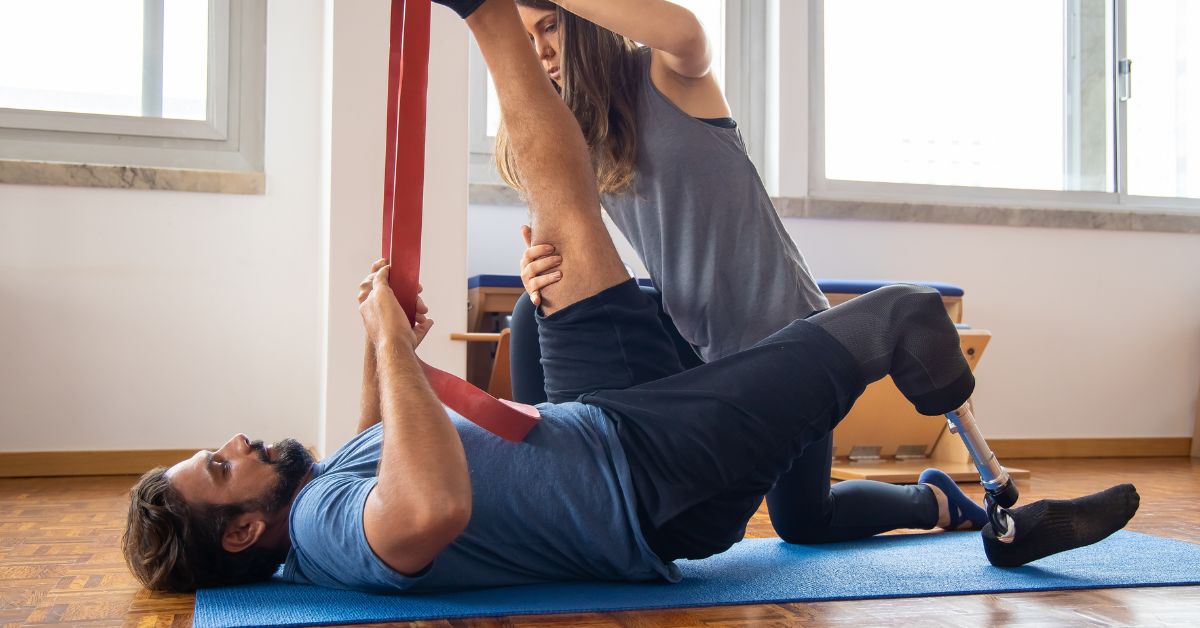Exercising is beneficial for your health, but for some people, it can be challenging to stay active. This is especially true of those with disabilities or long-term conditions.
Fortunately, various exercises can help improve fitness and flexibility. These include adapted aerobic activities as well as strength-training drills.
Tricep Dips
Tricep dips are ideal exercises for those seeking to build muscle in their arms. Additionally, they engage other upper body muscles such as the chest and shoulders.
However, they can be challenging to perform correctly. Many people make errors that hinder them from getting the most out of this workout.
A common error is allowing your shoulder to move forward as you lower down, placing undue strain on the joint and increasing the risk of injury. To prevent this, keep your arm firmly in its socket throughout every movement.
Push-ups
Push-ups can help people with disabilities build strength in the chest, triceps and shoulders. Furthermore, push-ups strengthen core muscles which are crucial for avoiding injury and improving balance.
No matter your fitness level or experience level, there are numerous variations to make the standard push-up more challenging and effective. The key is finding a starting point that fits your body’s fitness level and tempo. disability housing Melbourne.
Push-ups are an essential calisthenics movement that can be done anytime, anywhere. While they’re an excellent way to build strength and get in shape, they may also cause harm if done incorrectly.
Sit-ups
Sit-ups are a convenient exercise that can be done from home. Not only do they strengthen your core muscles and spine, but they’re great for building lean muscle mass as well.
Exercises can also build the hip flexors, the muscles responsible for bending your hips and lifting your legs.
However, sit-ups can be challenging for beginners. Many fall victim to thudding into the floor when lowering themselves, leading to pain and inflammation in their backs.
Leg lifts
Leg lifts are an exercise beneficial to anyone with reduced lower limb strength. They’re especially helpful to patients in hospitals or at home who require extra support when transferring from their wheelchairs.
Leg lifters are manual devices that consist of a reinforced strap with an end loop. To use, users simply hook their leg through this loop and lift it onto the bed.
Leg circles
Leg circles may be an ideal exercise if you have limited mobility. They tone your thighs and strengthen all the muscles in your upper legs while putting minimal strain on your hips, knees, and ankles.
Leg circles can be performed sitting or standing. Not only do they tone your glutes, outer hips, and hamstrings; but they also strengthen your core and pelvic stability.
Double leg circles (also referred to as circumduction) are another great variation for targeting your abs in the thigh area. You’ll get the same benefits of one-leg circles plus extra inner thigh trimming, but you must lift your top leg up too to complete this exercise.
Cycling
Cycling is a beloved activity for disabled individuals and can help promote physical and mental well-being. Unfortunately, PHE policy excludes it from its active travel strategy and health professionals lack knowledge regarding cycling’s benefits for disabled people.
This research investigated the experiences of a group of disabled cyclists, including their motivations to cycle and any barriers they encountered. It also assessed the training and resources used to deliver disability-specific cycle sessions. It included semi-structured interviews with promoters and training/activity providers as well as questionnaire surveys for participants, parents/carers, and instructors.









